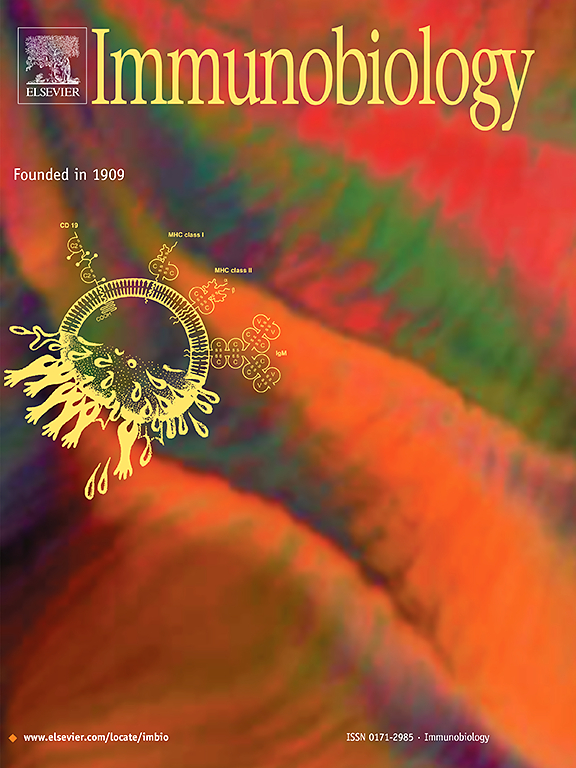ADAR1 的泛癌分析及其在低级别胶质瘤中的预后相关性
IF 2.3
4区 医学
Q3 IMMUNOLOGY
引用次数: 0
摘要
ADAR1 是腺苷酸-肌苷酸 RNA 编辑的主要酶,最近它通过 RNA 编辑依赖性和非依赖性途径与癌症的发生发展有关。这些发现表明,ADAR1 的功能可能超出了我们目前的理解范围。泛癌症分析为确定各种癌症的共同和不同机制提供了一个独特的机会,从而推动了个性化医疗的发展。低级别胶质瘤(LGG)的特点是肿瘤细胞的多样性,这给风险分层带来了挑战,导致治疗方法的显著差异。最近发现的低级别胶质瘤分子改变有助于完善这些肿瘤的分层,并为预测可能的结果提供了新的靶点。本研究旨在对多种癌症的 ADAR mRNA 进行详细分析,强调其在 LGG 中的预后意义。在跨肿瘤类型的泛癌症分析中,我们观察到 ADAR1/ADAR 的 mRNA 表达模式不一致,而蛋白表达模式则一致。ADAR mRNA表达并不总是与ADAR1蛋白表达相关。不过,转录本水平与基因改变、肿瘤突变负荷、微卫星不稳定性、总生存期、无复发生存期、免疫标记物存在、免疫浸润以及接受免疫疗法的特定癌症患者的生存期有显著相关性。此外,通过基因本体和京都基因与基因组百科全书分析发现,ADAR及其前50个相关基因主要参与mRNA相关事件。利用Cox比例危险模型,我们建立了一个3基因特征(ADAR、HNRNPK和SMG7),它能有效地将患者分为高危和低危两组,其中高危患者的总生存率较低,肿瘤分级较高,非编码缺失的数量较多。总体而言,这一特征与各种癌症的免疫浸润成反比。转录因子 SPI1 和 miR-206 是特征基因的潜在上游调控因子,它们与 LGG 患者的生存密切相关。这些基因的启动子区域发生了高甲基化,进一步将它们与患者的预后联系在一起。此外,这些基因显示出一致的药物易感性模式。总之,我们的研究结果揭示了 ADAR1 在癌症中的多方面作用,并强调了它在 LGG 中的预后价值,为潜在的治疗目标和策略提供了启示。本文章由计算机程序翻译,如有差异,请以英文原文为准。
Pan-cancer analysis of ADAR1 with its prognostic relevance in low-grade glioma
ADAR1, known as the primary enzyme for adenosine-to-inosine RNA editing, has recently been implicated in cancer development through both RNA editing-dependent and −independent pathways. These discoveries suggest that ADAR1′s functions may extend beyond our current understanding. A pan-cancer analysis offers a unique opportunity to identify both common and distinct mechanisms across various cancers, thereby advancing personalized medicine. Low-grade glioma (LGG), characterized by a diverse group of tumor cells, presents a challenge in risk stratification, leading to significant variations in treatment approaches. Recently discovered molecular alterations in LGG have helped to refine the stratification of of these tumors and offered novel targets for predicting likely outcomes. This study aims to provide a detailed analysis of ADAR mRNA across multiple cancers, emphasizing its prognostic significance in LGG. We observed inconsistent mRNA and consistent protein expression patterns of ADAR1/ADAR in pan-cancer analyses that across tumor types. ADAR mRNA expression did not always correlate with ADAR1 protein expression. Nevertheless, the transcript levels correlated significantly with genetic alterations, tumor mutation burden, microsatellite instability, overall survival, recurrence-free survival, immune marker presence, immune infiltration, and the survival of patients undergoing immunotherapy in select cancers. Furthermore, ADAR and its top 50 associated genes were primarily involved in mRNA-related events, as identified through Gene Ontology and Kyoto Encyclopedia of Genes and Genomes analyses. Utilizing the Cox proportional hazards model, we developed a 3-gene signature (ADAR, HNRNPK, and SMG7), which effectively stratified patients into high- and low-risk groups, with high-risk patients exhibiting poorer overall survival, higher tumor grades, and a greater number of non-codeletions. Overall, this signature was inversely related to immune infiltration across cancers. Transcription factor SPI1 and miR-206, potential upstream regulators of the signature genes, were closely linked to patient survival in LGG. The promoter regions of these genes were hypermethylated, further associating them with patient outcomes. Additionally, these genes displayed consistent drug susceptibility patterns. In conclusion, our findings reveal multiple aspects of ADAR1′s role in cancer and underscore its prognostic value in LGG, offering insights into potential therapeutic targets and strategies.
求助全文
通过发布文献求助,成功后即可免费获取论文全文。
去求助
来源期刊

Immunobiology
医学-免疫学
CiteScore
5.00
自引率
3.60%
发文量
108
审稿时长
55 days
期刊介绍:
Immunobiology is a peer-reviewed journal that publishes highly innovative research approaches for a wide range of immunological subjects, including
• Innate Immunity,
• Adaptive Immunity,
• Complement Biology,
• Macrophage and Dendritic Cell Biology,
• Parasite Immunology,
• Tumour Immunology,
• Clinical Immunology,
• Immunogenetics,
• Immunotherapy and
• Immunopathology of infectious, allergic and autoimmune disease.
 求助内容:
求助内容: 应助结果提醒方式:
应助结果提醒方式:


